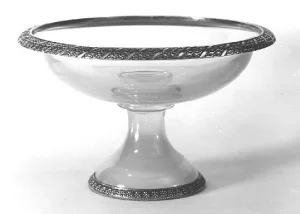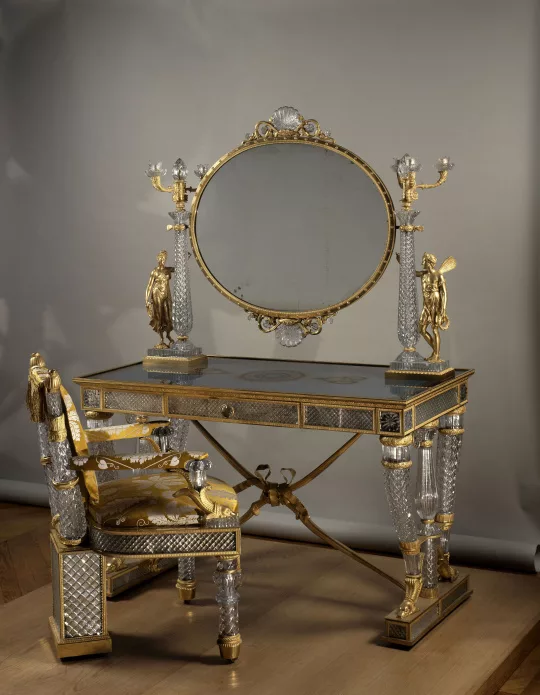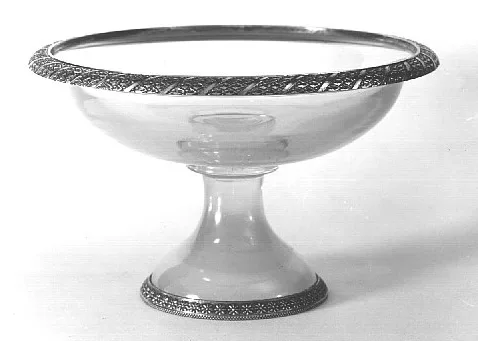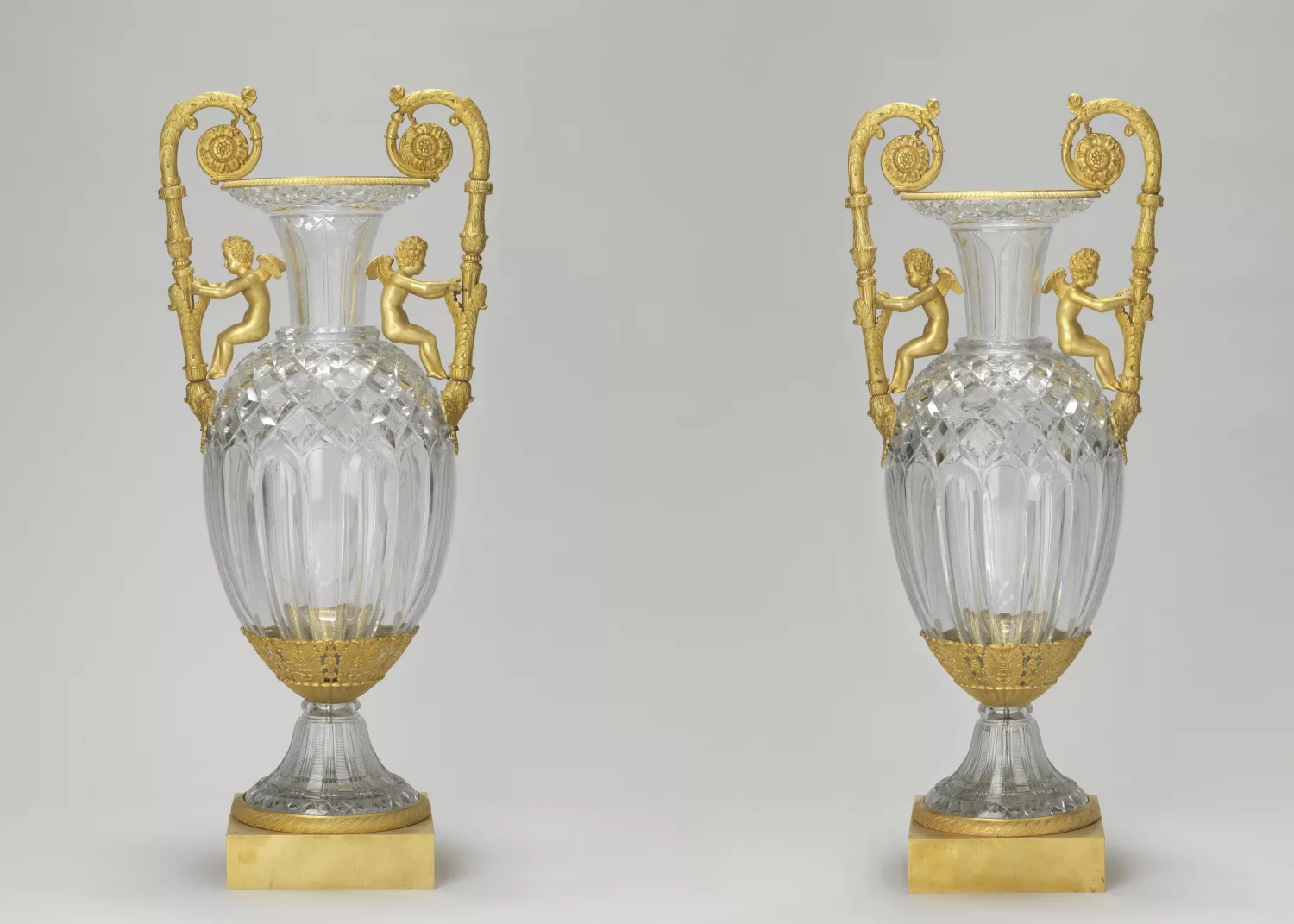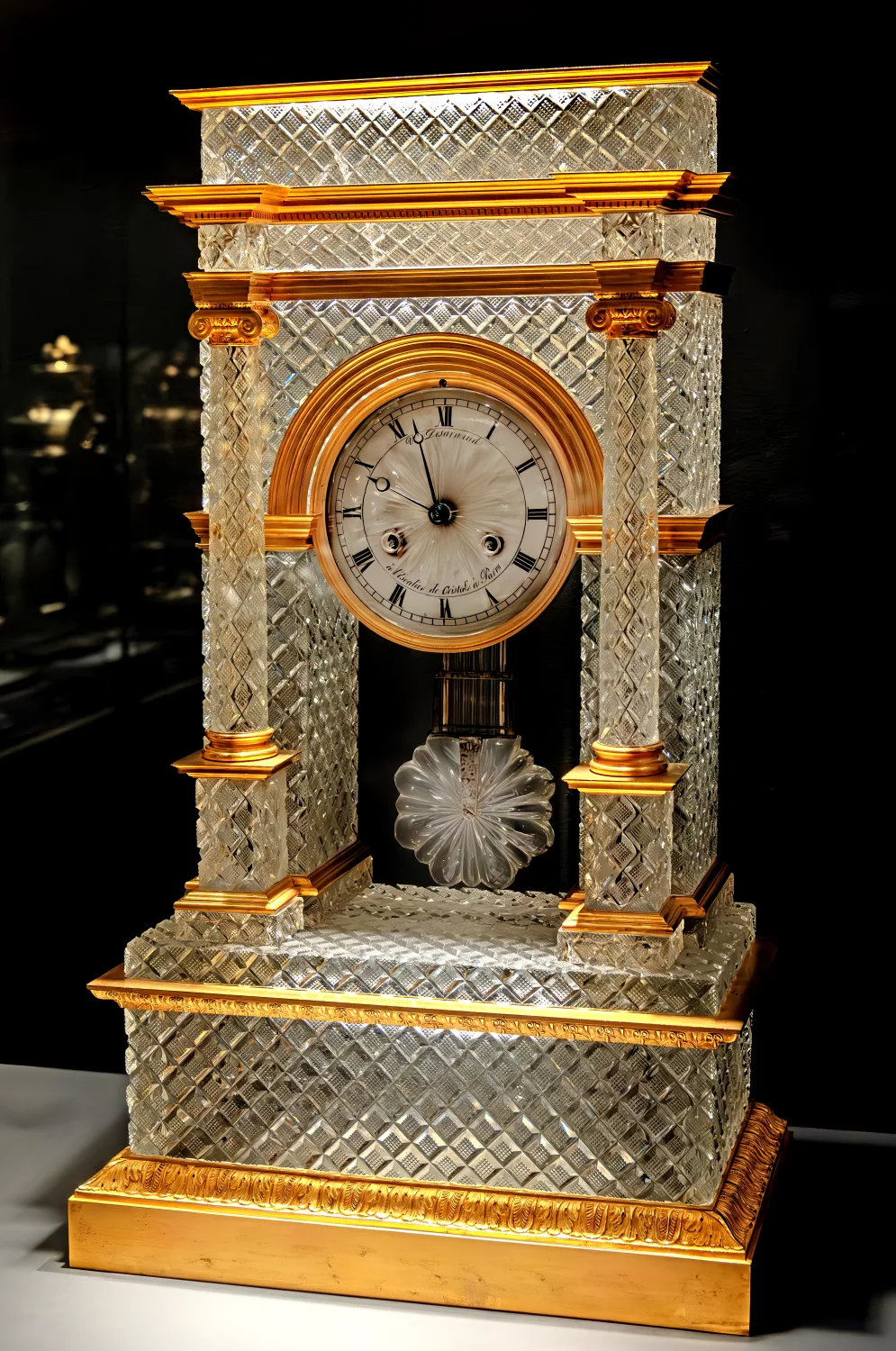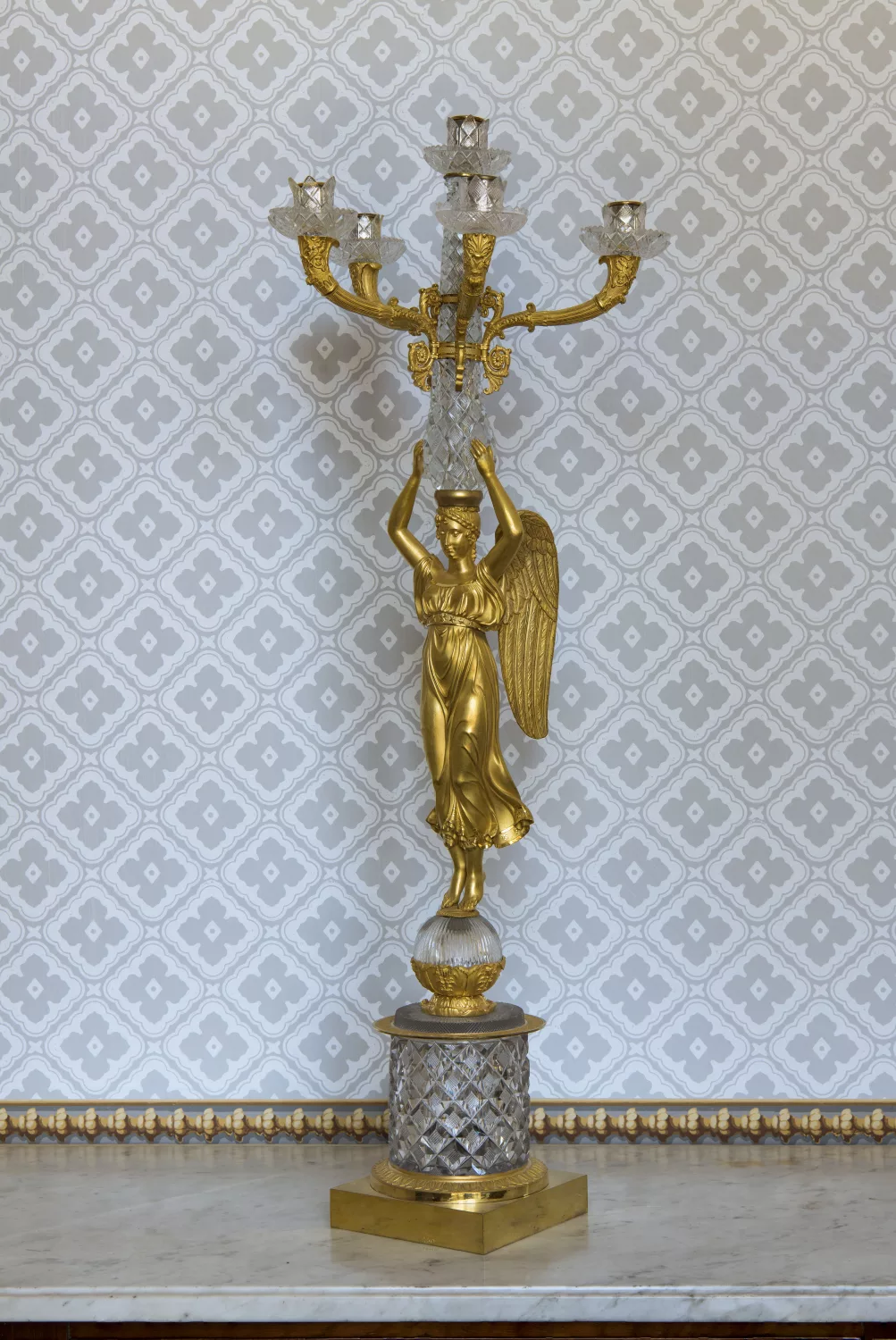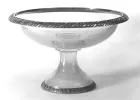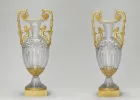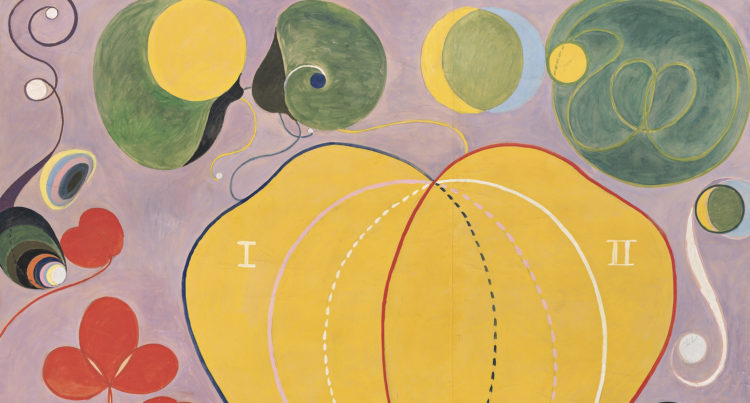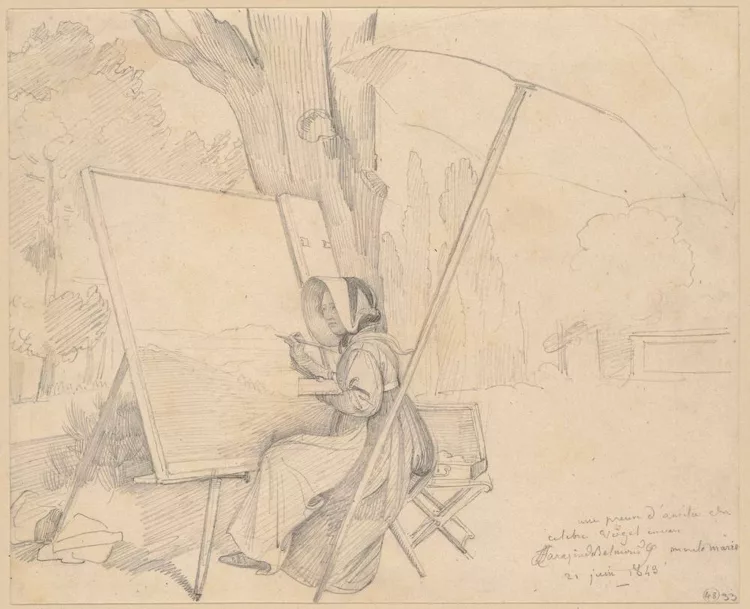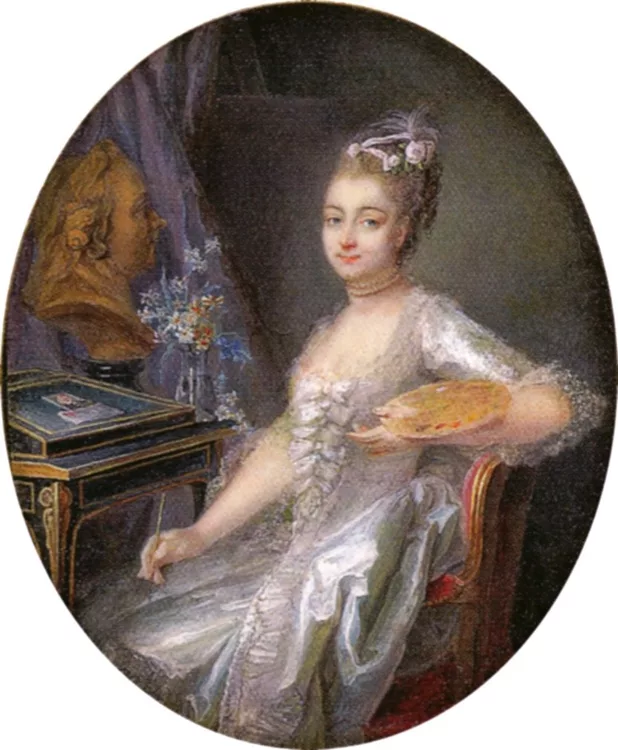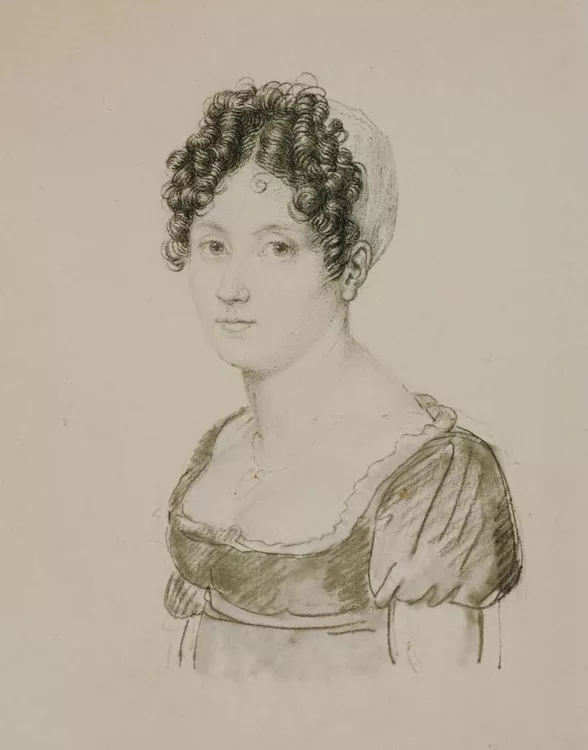Marie Jeanne Rosalie Désarnaud-Charpentier
Annick and Didier Masseau, L’Escalier de cristal. Le luxe à Paris (1809–1923), Saint-Rémy-en-l’Eau, Monelle Hayot, 2021
Baccarat. La légende du cristal, Petit Palais, Paris, October, 2014 – January, 2015
French crystal maker and mounter.
Rosalie Charpentier was the daughter of a goldsmith, and she may have first learned the art of metal engraving in her father’s workshop. In 1794 she married a military man, Pierre Renaud, in Châlons. The young couple moved to Paris, divorcing in November 1802. By spring 1803 R. Charpentier was in Bordeaux, where on 30 June she married the merchant Barthélémy Désarnaud, who was eighteen years her senior. She was able to provide for herself, “from her talent and earnings”, a relatively large dowry of 10,000 francs.
By 1809 at the latest, R. Charpentier and B. Désarnaud had moved to Paris and formed a business partnership with the artist’s younger brother, Philippe-Auguste Charpentier (1780–1815). At the age of twenty-eight he was a crystal and gemstone engraver, having studied under the renowned engraver Romain-Vincent Jeuffroy (1749–1826). From 1 July 1809, B. Désarnaud and his wife rented two adjoining shops at the Palais-Royal, numbers 153 and 154. This was the beginning of the luxury house that would, in 1815, become À l’escalier de cristal, its iconic emblem the shop’s staircase with crystal balusters.
B. Désarnaud died one year later on 8 August 1810, followed on 5 January 1815 by P.-A. Charpentier. From then on R. Charpentier directed the business alone, the sole governor of its success. Her trajectory, uncommon in early 19th century France, had already demonstrated her sense of independence and entrepreneurship, and the widow committed fully to the development of her craft. She came up with the innovative idea of setting the crystals in gilded bronze mounts, allowing them to be integrated into pendulum clocks, centrepieces, candelabras and even furniture, bringing her great success. The crystals were delivered uncut from the factory run by Aimé Gabriel d’Artigues, first in Vonêche, Belgium, and after 1815 in Baccarat, France. The material was then cut and mounted at the Palais-Royal.
In 1818, R. Charpentier became the official “supplier of crystals to the Duc de Berry, the Garde-Meuble de la Couronne and the King”. The title involved receiving commissions from the Garde-Meuble (responsible for the furnishing of the royal household), notably for the Duchesses of Berry and Angoulême, but it also attracted an impressive international clientele. The high point of the workshop’s success came in 1819 when, at the Exposition des produits de l’industrie, R. Charpentier printed a notice for the attention of the jury and was awarded a gold medal. She referred to having previously sold four large candelabras in Russia, a washstand set for the late Spanish Queen Marie-Isabelle of Portugal, a washstand for the Queen of Etruria in Lucca, and a mantelpiece with pendulum clocks, candelabras and large vases, taken to Madrid by the Duke of Berwick. She displayed some examples of her furniture: a mantelpiece, two large candelabras, two tables, a large clock and a number of vases. The most spectacular piece was a dressing table with an armchair, bought by the Duchess of Berry and now in the Musée du Louvre. This elegant toilette, with its pivoting mirror between figures of Flora and Zephyr, is a virtuosic showcase for the range of crystal cuts, with examples of diamond points, fluting and gadrooning.
R. Désarnaud-Charpentier made a considerable fortune and bought the Hôtel de Salm-Dyck at 97 Rue du Bac in Paris from Constance de Salm in January 1824. She retired during the final years of the Restoration (1814–1830), having sold her workshop to Jacques Boin.
A biography produced in partnership with the Louvre Museum.
© Archives of Women Artists, Research and Exhibitions, 2025


